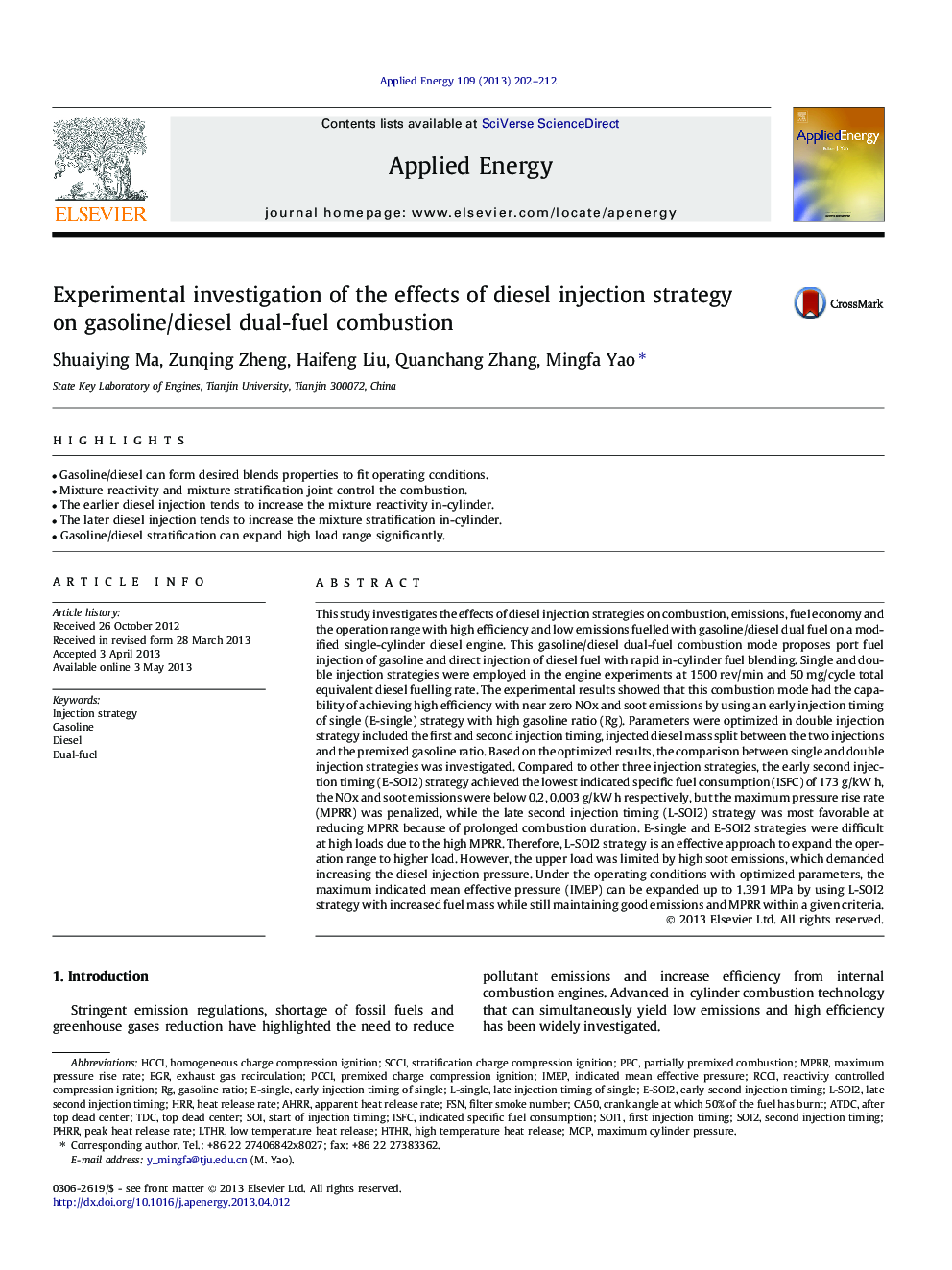| کد مقاله | کد نشریه | سال انتشار | مقاله انگلیسی | نسخه تمام متن |
|---|---|---|---|---|
| 243096 | 501919 | 2013 | 11 صفحه PDF | دانلود رایگان |

• Gasoline/diesel can form desired blends properties to fit operating conditions.
• Mixture reactivity and mixture stratification joint control the combustion.
• The earlier diesel injection tends to increase the mixture reactivity in-cylinder.
• The later diesel injection tends to increase the mixture stratification in-cylinder.
• Gasoline/diesel stratification can expand high load range significantly.
This study investigates the effects of diesel injection strategies on combustion, emissions, fuel economy and the operation range with high efficiency and low emissions fuelled with gasoline/diesel dual fuel on a modified single-cylinder diesel engine. This gasoline/diesel dual-fuel combustion mode proposes port fuel injection of gasoline and direct injection of diesel fuel with rapid in-cylinder fuel blending. Single and double injection strategies were employed in the engine experiments at 1500 rev/min and 50 mg/cycle total equivalent diesel fuelling rate. The experimental results showed that this combustion mode had the capability of achieving high efficiency with near zero NOx and soot emissions by using an early injection timing of single (E-single) strategy with high gasoline ratio (Rg). Parameters were optimized in double injection strategy included the first and second injection timing, injected diesel mass split between the two injections and the premixed gasoline ratio. Based on the optimized results, the comparison between single and double injection strategies was investigated. Compared to other three injection strategies, the early second injection timing (E-SOI2) strategy achieved the lowest indicated specific fuel consumption (ISFC) of 173 g/kW h, the NOx and soot emissions were below 0.2, 0.003 g/kW h respectively, but the maximum pressure rise rate (MPRR) was penalized, while the late second injection timing (L-SOI2) strategy was most favorable at reducing MPRR because of prolonged combustion duration. E-single and E-SOI2 strategies were difficult at high loads due to the high MPRR. Therefore, L-SOI2 strategy is an effective approach to expand the operation range to higher load. However, the upper load was limited by high soot emissions, which demanded increasing the diesel injection pressure. Under the operating conditions with optimized parameters, the maximum indicated mean effective pressure (IMEP) can be expanded up to 1.391 MPa by using L-SOI2 strategy with increased fuel mass while still maintaining good emissions and MPRR within a given criteria.
Journal: Applied Energy - Volume 109, September 2013, Pages 202–212